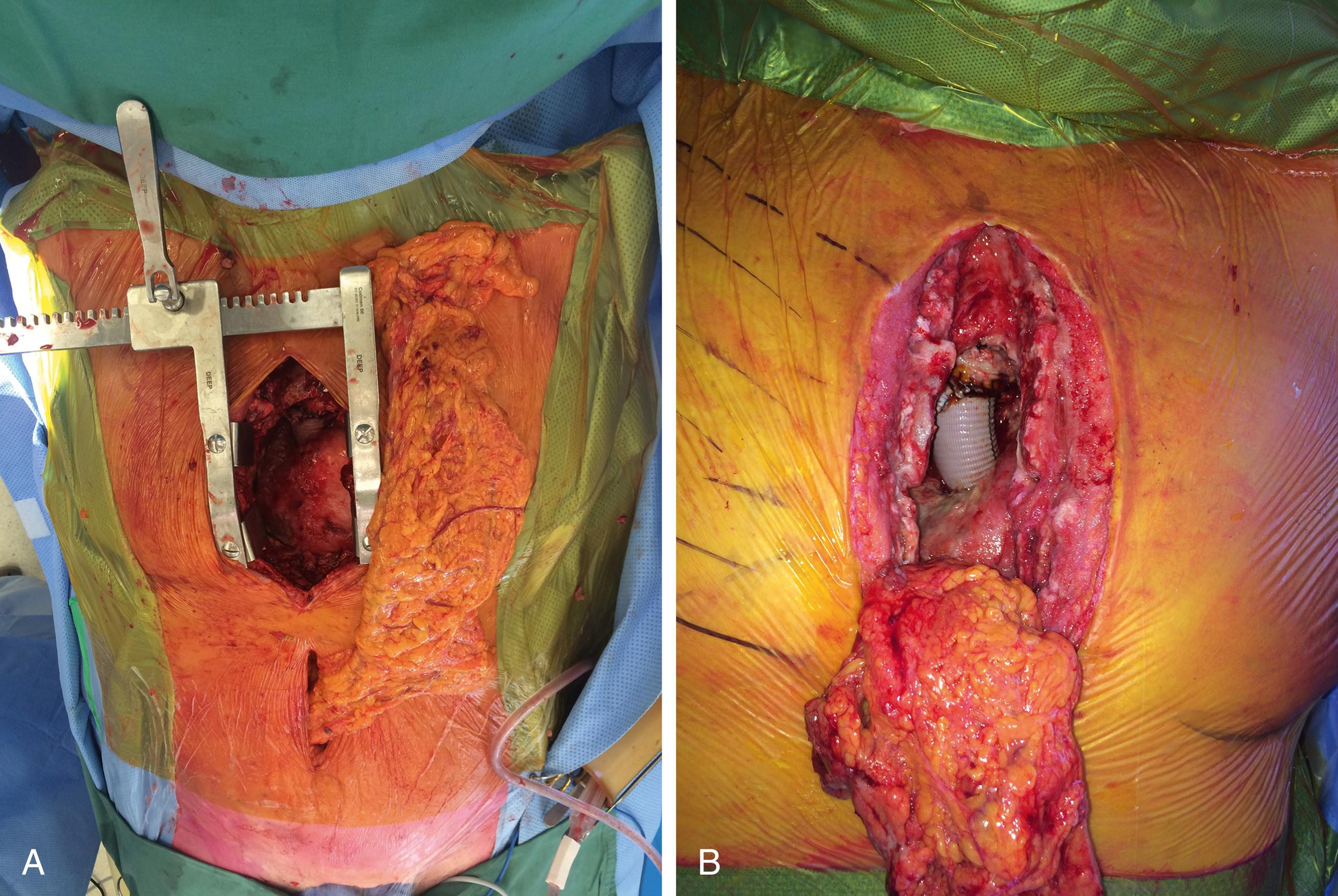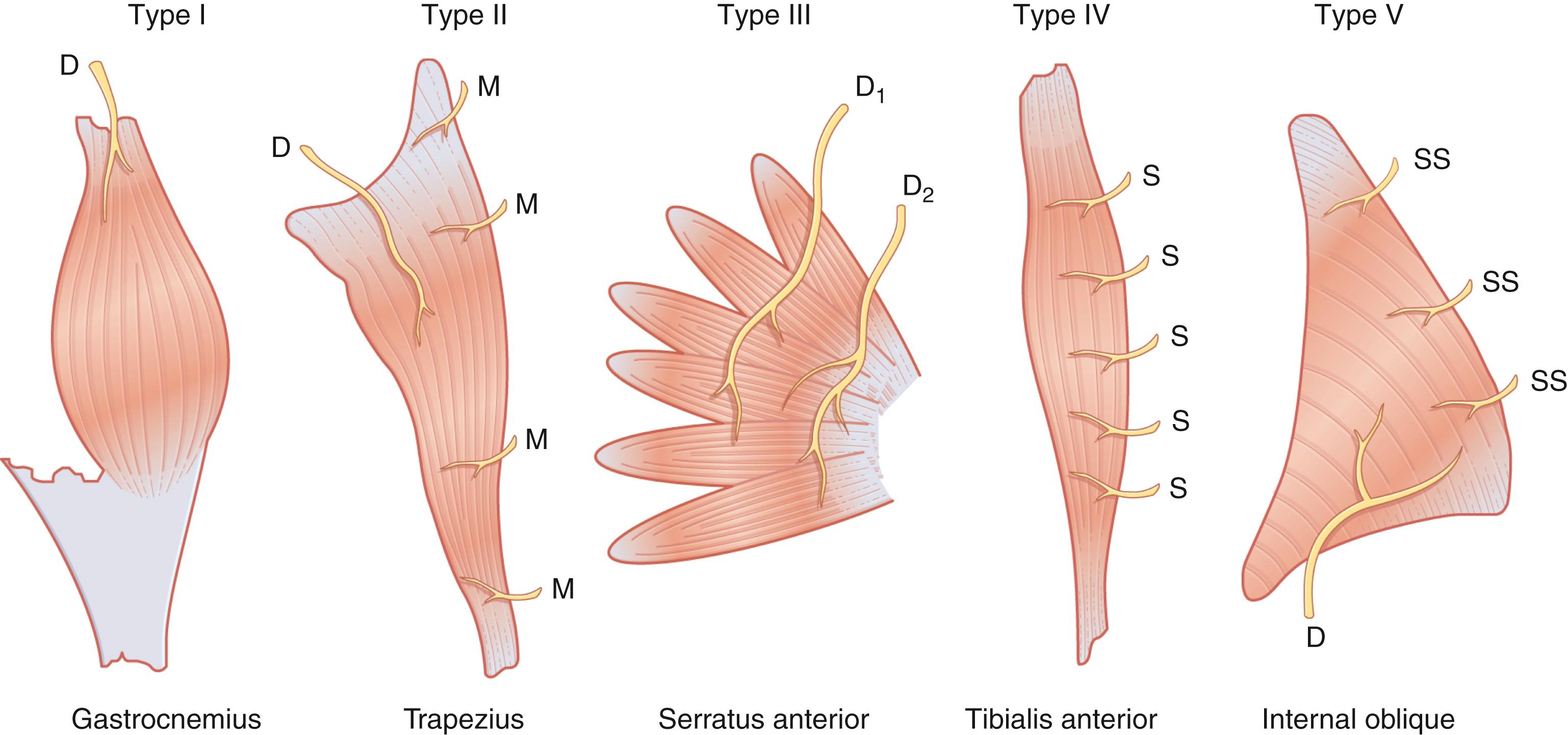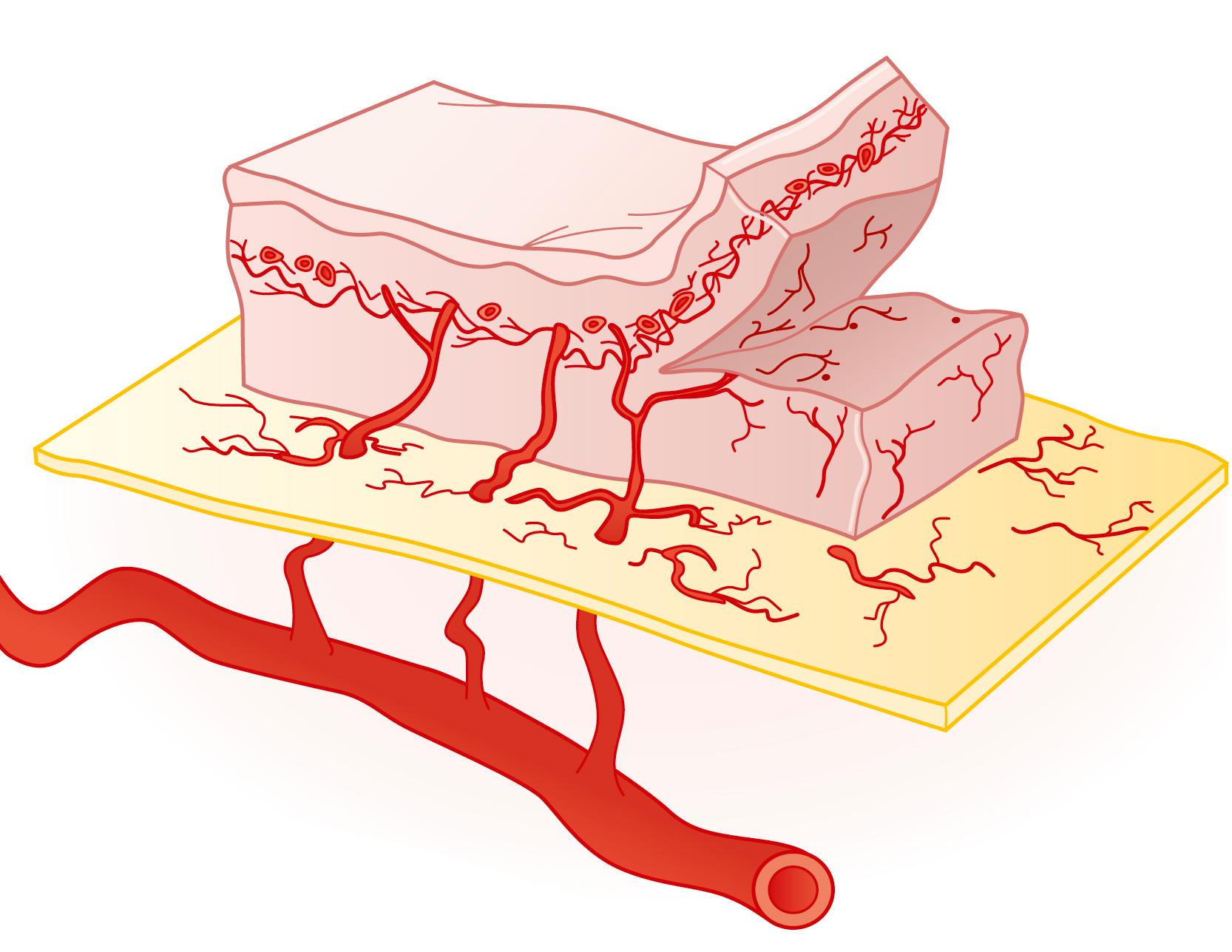Physical Address
304 North Cardinal St.
Dorchester Center, MA 02124
Flap surgery is the commonest procedure in plastic surgery and is the essence of the discipline. Critical to its success is a sound understanding of soft tissue’s blood supply, its compliance, and its mobility. As all flaps “rob Peter to pay Paul,” it is also about conceptualizing the secondary defect and minimizing its consequences. The art and craft of plastic surgery necessarily requires an esthetic sense and experience.
For almost a century, Manchot (1889) , and Salmon’s (1936) detailed studies of the skin’s vascular design were unknown to clinicians. With limited understanding and the simplistic belief that the skin’s blood supply was based on a random distribution in the horizontal plane, local flap surgery was unpredictable and its progress curtailed by an adherence to dogmatic rules such as length-to-width ratios and the superiority of proximal over distally-based flaps. A generation of surgeons failed to appreciate the simple observation that circumferentially incising large skin lesions in the process of their elevation and removal did not compromise their circulation. The explanation of course was that their blood supply was derived from the depths and not horizontally. Surgeons no doubt were aware of the circulation from below, but the reality was that sufficient numbers of these had to be divided to permit the flaps to transpose or rotate, and ultimately it was the base, fed by the horizontal input, that was the critical lifeline. Not until it would be shown that flaps could be completely islanded and still live was it possible to move flaps based on these deeper vessels. Milton (1970) elegantly highlighted the fallacy of the length-to-breadth ratio using pig studies to demonstrate the existence of arterialized zones of the integument that would survive over extreme lengths, even if completely islanded, provided they retained their arterial source at their base. These exciting findings breathed life back into the clinical study of the soft tissue’s blood supply. True to the adage that history is written by the victors, so too was the blinded acceptance of random pattern proposed by Gillies, derived in part from the neglect of the publications of the Dutchman Johannes Esser (1917), Gillies’ plastic surgery counterpart for the German army in World War I. Instead of the complex tube pedicle (Webster 1937), Esser performed one-stage “arterialized biological island flaps” based on the palpable arteries of the head and neck region. He clearly recognized the fundamental concepts of the flap’s axial blood supply. Furthermore, Gillies was very aware of his work but publicly pronounced it “not up to the standards expected of the British and American people.”
The first clinical application of the new “axial pattern” concept was the groin flap (McGregor 1972), based on the superficial circumflex iliac branch of the femoral artery. The wide arc of rotation of this very long and narrow-based flap of like tissue expanded the single-stage reconstructive options for the regional wounds previously manageable only by multistage transfers requiring protracted immobilization and hospitalization.
What had been anecdotally reported in the early literature and had been empirically adopted in practice, the Indian forehead flap for nasal reconstruction and the epigastric flap in the lower abdomen (Shaw 1920), now made sense. The former flap unwittingly captured the supratrochlear/supraorbital vessels and the latter the superficial epigastrics.
With this new awareness, omentum although not skin, was quickly recognized for its application as an arterialized flap by virtue of it wearing its blood supply on the outside of its surface. The vasculature could be pruned to critical arterial pedicles and tunneled from the abdominal cavity to cover far-flung defects and then skin grafted where needed ( Fig. 2.1 ).

Other fundamental concepts of skin blood supply were soon elucidated. The myocutaneous flaps were described, where the skin relied for its blood supply on the multitude of small vessels perforating through the underlying muscle. Provided the muscle was raised on its blood supply, the overlying skin would survive, even when completely islanded. As muscles typically are vascularized often by a single source at their origin the muscle pedicle added even further length to the arc of flap rotation. The gracilis (Orticochea 1972) and latissimus dorsi myocutaneous flap (Olivara 1976), , reinventing the earlier findings of Tansini (1906), were the first to be described and widely adopted. Muscle flaps without skin followed and the anatomical articulation of their vascular basis further expanded the options for one-stage locoregional reconstructions (Mathes and Nahai 1981) ( Fig. 2.2 ).

Fasciocutaneous flaps recognized for the first time that a significant contribution to skin blood supply was in the plane of the deep fascia and provided this fascia was included within the flap, large areas of previously unreliably vascularized skin would survive (Ponten 1981). This particularly applies to the lower limb. Initially they were designed on the assumption their vascularity was in the plane of the fascia and in the limbs, flaps were based proximally to capture its source. It was soon clear that much of this fasciocutaneous blood supply derived from perforating branches of named deep vessels, emerging vertically between septofascial muscle planes from deep axial vessels and furthermore that these zones could be completely islanded from their proximal connections.
This led to the unifying concept of angiosome blood supply (Taylor and Palmer 1987), where the tissue is considered as a three-dimensional territory or somite structure akin to vertebrate embryological development where not only skin, but whole mesenchymal somites including skin, muscle, and bone, have a vascular zone. This was supported by meticulous cadaver studies and expanded the earlier work of Manchot and Salmon.
Concurrent with this explosion in the understanding of the skin’s blood supply, advances were being made in microvascular surgical techniques and instrumentation initially by the neurosurgeons, (Jacobson and Suarez 1962) and quickly adopted for plastic surgery. Microsurgery was a technical disruptor of its time and had immediate application for replantation. Subsequently the transplantation of toes and territories of skin by anastomosing specific vessels flourished. The first such flap was an omental transfer to the scalp (McLean and Buncke Jr 1972). Skin flaps soon followed (Taylor and Daniel, 1973; O’Brien et al 1973 ). More recently, supermicrosurgery has provided surgeons with greater confidence to explore free, pedicled, and ‘freestyle’ perforator flaps (Koshima 1997), reappraise lymphatic surgery and the impetus to further examine the microvasculature anatomy (Saint-Cyer et al 2009 ; Imanishi et al 2000 ; Narushima et al 2018 ).
Flap surgery involves the transfer of tissue with its vascularity preserved. Necessarily this requires an understanding of the physiology and anatomy of the integument’s blood supply.
The blood supply (15 mL/min per 100 cm³) to the skin, greatly exceeds its metabolic needs because of its homeostatic role in thermoregulation and systemic circulation. This explains the relative robustness of skin flaps.
Perfusion of the skin’s capillary beds is regulated by complex and incompletely understood local and systemic neurohumoral mechanisms. These act on precapillary sphincters and arteriovenous anastomoses influencing the filling and emptying of the dermal plexuses and in turn not just the circulation of the skin and subcutaneous tissue, but also insensible heat loss and venous return to the heart. Practically, it follows that the patient following flap surgery should be kept warm, well perfused, and pain-free to maximize the circulation to the peripheries. Technical factors largely underpin successful flap surgery. Clinical experience suggests that perforator flaps become hyperperfused following circumferential incision of the skin; leeching can temporarily alleviate venous congestion and topical vasodilators may beneficially alter the intrinsic blood supply of a flap. Smoking on the other hand is known to cause vasoconstriction in small vessels.
The circulation of the skin and its underlying structures consists of a non-uniform three-dimensional continuous vascular network. For the purposes of skin flap surgery, conceptualizing this vascular network as consisting of horizontal and vertical components is useful.
Running parallel with the skin, and constituting the horizontal component of the skin’s blood supply, are the numerous vascular plexuses. Most important amongst these are the subdermal plexus and the deeper suprafascial plexus. Where no deep fascia exists an equivalent structure such as the panniculus carnosus (limited to the platysma, palmaris brevis, and the dartos muscles in man) serves a similar purpose. These are the vascular bases of (random) cutaneous and fasciocutaneous flaps.
Vessels arising vertically from their source arteries either directly supply the skin, or indirectly supply the skin after nourishing deeper structures such as muscle, tendon, and bone. These are known as “perforators” and they arise from the deep named vessels, axially in the limbs and perpendicularly in the trunk, and follow the dermatomes. They occur in their highest density over the less mobile soft tissue that is adherent to underlying septa; this is particularly evident in the limbs. Perforators anastomose initially with the prefascial plexus before continuing on to the subdermal plexus and are the vascular pedicles on which islands of skin and other soft tissue components may be based . It follows that separate islands of skin and fascia each based on a separate perforator but ultimately deriving from a common arterial axial vessel can be raised on this common axis and permit complex reconstructions with multiple independently oriented flaps.
Renewed interest in the hundreds of cutaneous perforators throughout the body has seen a renaissance in local flap surgery. Based on single perforators, perforator flaps offer greater flexibility to utilize the local tissues and achieve better like-for-like reconstructions all the while minimizing donor morbidity. Crucially, the size of the perforasome remains unknown. Relevant factors include perforator size, direction, density, orientation, and linkages with adjacent perforators and cutaneous nerves, as well as hyperperfusion of the skeletonized perforator , ( Fig. 2.3 ). The blood supply of the skin and its underlying structures can also be divided into vascular territories, or angiosomes , each one being interconnected with its adjacent territory by bi-directional arterioles, the direction interchangeable and determined by the relative pressure in each territory. The angiosome is the vascular basis for composite flaps.

Drainage of the skin is by a reciprocal three-dimensional venous network of avalvular bidirectional veins with a dominant subdermal component. This in turn drains into large caliber subcutaneous veins or venae comitantes that run with perforators. Superficial lymphatics follow subcutaneous veins and deeper lymphatics follow arteries.
Venous flaps are generally transferred as free microvascular flaps where the flap is elevated superficially with only the venous system thereby obtaining a thin flap with little morbidity. The flap is arterialized through its veins by anastomosing them to an artery in varying configurations, the tissue being nourished by retrograde perfusion. There is a small but significant body of work suggesting that these flaps may have a wider application than previously thought. Central to this modification of venous flaps to shunt restricted arteriovenous flaps. There are many classification systems based on efferent, afferent vessels, as well as shunt site.
Become a Clinical Tree membership for Full access and enjoy Unlimited articles
If you are a member. Log in here